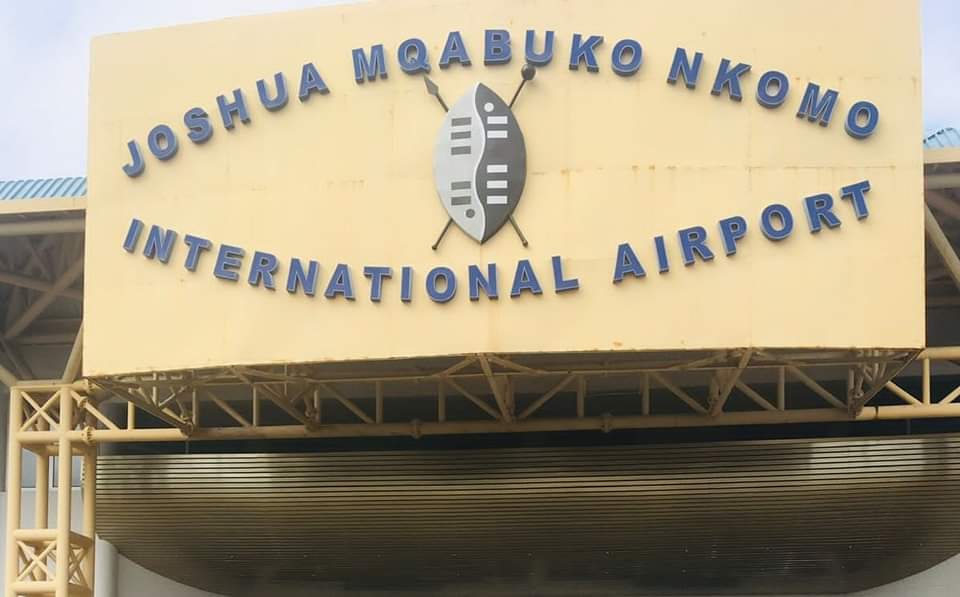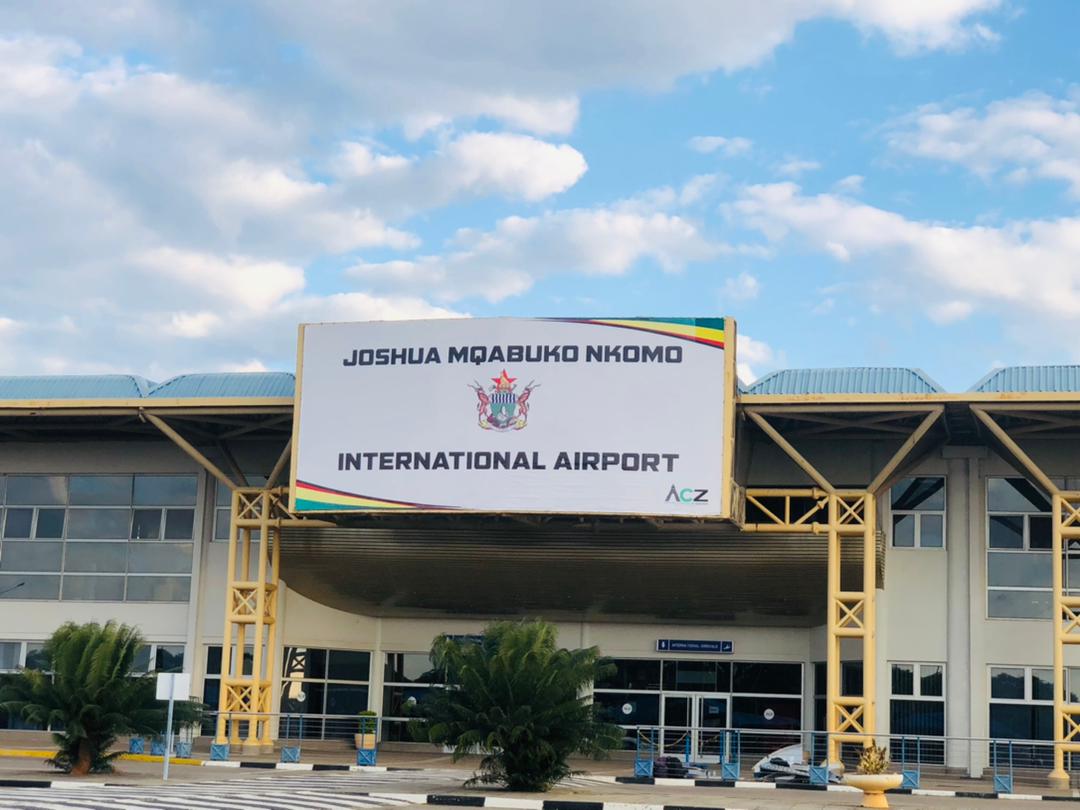Activists in Bulawayo have expressed outrage over the change of signage at the Joshua Mqabuko Nkomo (JMN) International airport, as authorities removed the Ndebele cultural shield that was branded on it and replaced it with a new one with the government’s Coat of Arms emblem.
The airport which was established in 1959 was refurbished and rebranded JMN International Airport in 2013 by former president Robert Mugabe. On the same day, a statue of the late national was unveiled on Main Street which also changed to Joshua Mqabuko Nkomo Street.

The shield, the knobkerrie and spear were part of the signage at the airport.
These were traditional African weapons used by warriors in battle.
The weapons were used in one some of the decisive battles such as the Matabele War of 1893 and the first Umvukela of 1896.
These three weapons have remained a part of the cultural fabric of the region with various institutions including schools adopting them as part of their logos.
Even the hugely popular Highlanders Football Club adopted the shield, spear and knobkerrie as part of its logo.
It is not clear when the signage was changed but when contacted for a comment, JMN International Airport manager Passmore Dewa referred questions to Chief Executive Officer of Airports Company of Zimbabwe (ACZ), Tawanda Gusha, whose mobile phone was unreachable.
But activities are displeased with authorities who changed the signage without prior consultations and engagement with stakeholders from the region.
They claimed this could be an attempt to undermine the legacy of the Ndebele nation and that of late nationalist, vice president, Joshua Nkomo.
In an interview with CITE, social analyst, Effie Ncube, said it was not proper for the government to change cultural symbols that had a traditional meaning for locals.
“They should not have changed the signage without consulting the host people of Matabeleland but ought to have engaged the people to explain why they needed to change it,” he said.
Ncube noted that locals who stayed in Matabeleland had pride in their culture and its significance to their lives and therefore had attached meaning.
“People who stay here associate and believe what the shield means but the new emblem or sign that has been put is not recognisable. There is no question that the airport is located in Bulawayo and the consistent symbols that have been used are either the elephant or the shield, traditionally that is what people know,” said the analyst.
“By and large they should consult people first. This shows they are undemocratic and seek to erase the history of Matabeleland.”
Ibhetshu LikaZulu Secretary-General, Mbuso Fuzwayo, concurred the change of the emblem illustrated that the government did not respect a people’s culture.
“The government can go around fooling people that it is promoting culture but it can only promote their interests and their preferred narrative. They don’t want to recognise that the culture of Zimbabweans is diverse,” he said.
Fuzwayo said it was not entirely shocking that the government can change emblems ‘willy nilly,’ as it ruled with an iron fist.
“So at any given time, the government can do what they want. If you remember in 2015 they are the ones who commissioned the Joshua Mqabuko Nkomo airport and statue but are now undoing everything that promotes who we are and our cultural beliefs,” he noted.
“This government will claim it is progressive, but it is not and nothing new can be expected from the (Emmerson) Mnangagwa (led) government.”
However, critical studies scholar, Khanyile Mlotshwa, suggested since the shield, knobkerrie and spear were tied to Ndebele nationalism, the change to the government’s Coat of Arms was branding the airport as a Zimbabwean national feature.
“There is no problem because Nkomo is and was a national figure. The shield is an emblem in some other African countries and this could have been a source of confusion when travellers landed into the country,” he stated.
“Worse in a country where Ndebele nationalism competes with Zimbabwean nationalism, in what Professor Ndlovu-Gatsheni calls bimodal nationalism. The move clearly fixes Nkomo as a Zimbabwean national figure that he is.”

